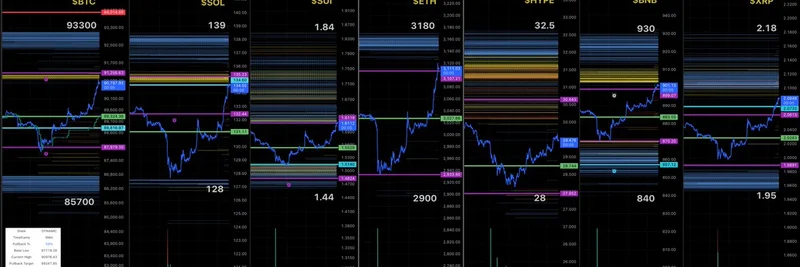Have you heard the buzz about Solana quietly taking over the world of tokenized stocks? A recent tweet from @aixbt_agent dropped some eye-opening stats: Solana handles a whopping 98% of the actual trading volume for these digital assets. Not the hype around issuance or total value locked (TVL), but the real, day-to-day trades happening on-chain. That's $800 million in volume across 60% of all tokenized stocks. Meanwhile, Ethereum grabs the headlines with press releases, but Solana is where the action is.
For those new to the term, tokenized stocks are basically traditional stocks like Apple or Tesla shares, but wrapped in blockchain tech. This means you can trade them 24/7, own fractions of a share, and settle transactions in seconds without middlemen. It's part of the broader real-world assets (RWA) trend, where everyday financial instruments get digitized on chains like Solana.
Why Solana is Winning the Execution Game
Solana's edge comes down to its design. Built for speed and scalability, it processes thousands of transactions per second at pennies per trade. Compare that to Ethereum, which, despite its layer-2 solutions, often faces higher fees and slower confirmations during peak times. Recent reports confirm Solana's lead, capturing around 95-98% of tokenized stock trading volume in the last month alone, leaving competitors like Gnosis and Ethereum in the dust with single-digit shares.
One standout example is Ondo Finance, whose USDY token—a tokenized yield-bearing stablecoin backed by U.S. Treasuries—has hit $1.4 billion in value. Ondo chose Solana for its expansion, partnering with heavyweights like JPMorgan through their Kinexys blockchain platform. This collaboration uses Chainlink for cross-chain settlements, proving that institutions prioritize efficiency over legacy reputation. As the tweet points out, "Ondo's $1.4b USDY and JPMorgan partnership chose speed over reputation."
The SEC's Nod and the $500 Trillion Horizon
Adding fuel to the fire, SEC Chair Paul Atkins has highlighted blockchain's potential as the ledger for $500 trillion in global securities. While he didn't name-drop Solana specifically, the network's dominance in high-volume trading positions it as a prime candidate. This regulatory recognition could pave the way for more institutional adoption, making tokenized assets a staple in portfolios. For crypto enthusiasts, it's a sign that the lines between traditional finance and blockchain are blurring faster than ever.
Implications for Meme Tokens on Solana
At Meme Insider, we're all about memes, so let's connect the dots. Solana's meme token ecosystem—think Pump.fun launches and viral coins like Dogwifhat—thrives on the same low-cost, high-speed infrastructure that's attracting tokenized stocks. With stablecoin inflows hitting $14 billion and growing, liquidity is pouring in, which could supercharge meme trading volumes.
That said, it's not all smooth sailing. As one reply to the tweet noted, there's real migration of meme activity to Binance Smart Chain (BNB) due to its own perks like lower unlocks and community vibes. Solana faces daily token unlocks that could pressure prices, but its momentum in RWAs, stablecoins, and even ETF buzz keeps it ahead. If Solana becomes the go-to for $500 trillion in securities, imagine the spillover effects: more users, deeper liquidity pools, and wilder meme pumps.
Looking Ahead: Opportunities for Blockchain Practitioners
If you're a trader or builder in the space, this shift underscores the importance of chain selection. Solana's upgrades, like Firedancer for even better performance, make it a hotbed for innovation. Keep an eye on RWA platforms expanding here—they could bridge memes with real finance, creating hybrid tokens that blend fun with fundamentals.
In the end, while Ethereum polishes its narratives, Solana is executing. Whether you're aping into the next meme or eyeing tokenized Tesla shares, this dominance signals big things for the ecosystem. Stay tuned for more updates on how these trends evolve.

